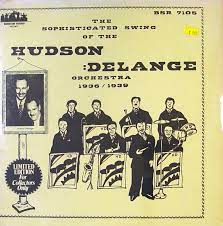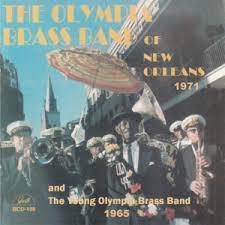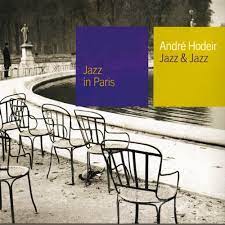
Daily Dose Of Jazz…
Lance Bryant was born on March 23, 1961 in Markham, Illinois. His early musical experience was in the Baptist church. He received his formal education at Berklee College of Music in Boston, Massachusetts where he studied saxophone composition and arranging. Moving to New York City in the mid Eighties he continued his study of saxophone and arranging privately with Frank Foster.
In the Nineties he began his relationship with the Lionel Hampton Orchestra and three years later became the orchestra’s musical director and principal arranger. He made his film debut in Spike Lee’s Malcolm X. He traveled extensively with Phyllis Hyman, Jon Hendricks, Pete “LaRocca” Sims, Wallace Roney, Abdullah Ibrahim, Bootsy Collins,James Williams and numerous others. He was an on-stage musician for the Broadway musical review Swing, has recorded with Carla Cook, George Gee, Yoron Israel.
Returning to his church roots he became Director of Instrumental Music at Fountain Baptist Church, Minister of Music for Andover Baptist Church and released Psalm in 2002, his first of a four cd series of originals and jazz arrangements of hymns and spirituals. As an educator he has taught Covenant Christian Academy, Phillips Academy, his alma mater Berklee, and Jazz At Lincoln Center’s Educational Department.
Saxophonist, arranger and vocalist Lance Bryant when not touring with Abdullah Ibrahim and Ekaya, he continues to perform around New York and New Jersey with Andy Farber Orchestra and the New Lionel Hampton Big Band.
More Posts: arranger,history,instrumental,jazz,music,saxophone,vocal

Daily Dose Of Jazz…
Will Hudson was born Arthur Murray Hainer on March 8, 1908 in Grimsby, Ontario, Canada. His parents immigrated to the United States when he was nearly two years old. Growing up in Detroit, Michigan he graduated from Southeastern High School in 1926. He changed his name sometime between 1931 and 1933 and put together his first big band in Detroit in the early 1930s. Hudson became a United States citizen on April 14, 1941.
In 1934 Hudson joined ASCAP in 1934. At some point during the early 1930s, he became a staff arranger for Irving Mills, writing stock arrangements. Mills was notable in various roles in the development of swing and jazz — was as much a promoter of songwriters, arrangers, and big bands as he was a publisher.
Hudson was a dance-band arranger, and co-leader with Eddie DeLange of the Hudson-DeLange Orchestra. Singers with the orchestra included Ruth Gaylor, Mitchell Ayres, Georgia Gibbs, and Nan Wynn. When the orchestra was at the height of its popularity, around 1940, Hudson had to withdraw for health reasons.
Hudson also led his own band, the Will Hudson Orchestra, from 1939 to about 1941. His vocalists included Kay Kenny, Elisse Cooper, Jayne Dover and Ruth Gaylor.
DeLange and Hudson wrote the lyrics to several songs composed by Hudson and in 1941 he began focusing on arranging, full-time. Enlisting in the U.S. Army in 1943, serving in the U.S. Army Air Force. He became the arranger for the Glenn Miller Army Air Force Band until his discharge in 1945.
1948 saw Will enrolled at Juilliard where he studied orchestration and composition, earning a diploma in 1952 and post-grad diploma the following year. He also studied composition privately. His compositions include Moonglow, Tormented, Sophisticated Swing, Mr. Ghost Goes to Town, Devil’s Kitchen, You’re Not the Kind and Witch Doctor.
Composer, arranger, and big band leader Will Hudson, active from the mid-1930s through the mid-Fifties, transitioned on July 16, 1981.
More Posts: arranger,bandleader,composer,history,instrumental,jazz,music

Daily Dose Of Jazz…
Paul Crawford was born on February 16, 1925 in Atmore, Alabama, to parents who were a Baptist minister and a music teacher. After serving in the Navy during World War II he graduated from the Eastman School of Music in Rochester, New York where he studied trombone in a classical style. He went on to study under trombonist and teacher Emory Remington, pursued for a time graduate studies at the University of Alabama. Moving to New Orleans, Louisiana in 1951 he became a specialist in the Dixieland style of Jazz.
Crawford initially took up residence in the French Quarter of New Orleans where he became acquainted with people in the local arts and music scene. He also started performing at the New Orleans Jazz Club and learned to play Dixieland. Soon after he became co-bandleader of the Crawford-Ferguson Night Owls, with Leonard Ferguson, frequently performing on the steamboat President.
He made his first recordings on trombone in 1957 with the Lakefront Loungers. During this time, Paul played the trombone on non-paying gigs, and participated in jam sessions. He performed with Sharkey Bonano and with bandleader Paul “Doc” Evans.
By the 1950s, with Deep South laws prohibiting white musicians from performing with Black musicians, jobs dried up. As these laws were struck down in the 1960s, opportunities opened up for Crawford to perform with various notable Black jazz musicians in New Orleans. In 1964, Crawford was approached by Allan Jaffe, who was the owner of Preservation Hall, about performing at the Preservation Hall venue. With Punch Miller, he became a part of the Preservation Hall Jazz Band.
Shortly thereafter, he became a part of the Olympia Brass Band, marched in many New Orleans Jazz Funerals and often performed with the baritone horn. He was a founding member of the New Orleans Ragtime Orchestra. As a member of this group and others, he helped make the soundtrack for the movies “Pretty Baby” and “Live and Let Die”, as well as many other recording sessions. Crawford played the baritone horn in many performances of the musical “One Mo’ Time”.
Crawford was an associate curator at the Tulane University Hogan Jazz Archive. As curator, conducted numerous interviews for an oral history of jazz, and resurrected many forgotten pieces of jazz music and developed arrangements of them. He also developed a significant number of photos of jazz musicians and performances, in a private collection.
Trombonist, baritone hornist, arranger and music historian Paul Crawford, who specialized in Dixieland jazz, transitioned on July 31, 1996 of lung cancer. He had been living in a New Orleans skilled nursing facility at the time.
More Posts: arranger,bandleader,baritone horn,curator,historian,history,instrumental,jazz,music,trombone

Daily Dose Of Jazz…
Page Cavanaugh was born Walter Page Cavanaugh on January 26, 1922 in Cherokee, Kansas and began on piano at age nine. By the time he turned 16 he was playing with Ernie Williamson’s band for a year before moving to Los Angeles, California and joining the Bobby Sherwood band at age 20.
While serving in the military during World War II, he met guitarist Al Viola and bassist Lloyd Pratt, and they formed a trio. After the war’s end they performed together in the style of the Nat King Cole Trio, scoring a number of hits in the late 1940s, including The Three Bears, Walkin’ My Baby Back Home, and All of Me. The trio appeared in the films A Song Is Born, Big City, Lullaby of Broadway and Romance on the High Seas. He recorded dozens of tracks with Doris Day, Frank Sinatra, Dinah Shore, June Christy, Mel Torme and other legendary singers.
During the early Fifties he had a program, Page Pages You, on the short-lived Progressive Broadcasting System, the trio played on Frank Sinatra’s radio program, Songs by Sinatra, and on The Jack Paar Show. Cavanaugh played in Los Angeles nightclubs through the 1990s, both in a trio setting and as a septet, the Page 7. He recorded with Bobby Woods & Les Deux Love Orchestra, and as a bandleader with MGM, Capitol, RCA, Star Line, Tiara, and Dobre Records over the course of his career, releasing his final trio album, Return to Elegance, in 2006.
Pianist, vocalist, and arranger Page Cavanaugh transitioned from kidney failure on December 19, 2008 in Los Angeles, California.
More Posts: arranger,bandleader,history,instrumental,jazz,music,piano,vocal

Daily Dose Of Jazz…
André Hodeir was born January 22, 1921 in Paris, France and trained as a classical violinist and composer. He studied at the Conservatoire de Paris, where he was taught by Olivier Messiaen and won first prizes in fugue, harmony, and music history. While pursuing these studies he discovered jazz and various music forms besides jazz and classical. He recorded on violin under the pseudonym Claude Laurence.
In 1954 he was a founder and director of Jazz Groupe de Paris, which included Bobby Jaspar, Pierre Michelot and Nat Peck. In 1957, at the invitation of Ozzie Cadena of Savoy Records, he recorded an album of his compositions with Donald Byrd, Idrees Sulieman, Frank Rehak, Hal McKusick, Eddie Costa, George Duvivier, and Annie Ross.
In addition to two books of Essais (1954 and 1956), he wrote film scores, including Le Palais Idéal by Ado Kyrou for the film Chutes de pierres, danger de mort by Michel Fano, and Brigitte Bardot’s Une Parisienne.
He founded an orchestra during the Sixties and composed a work based on the Anna Livia Plurabelle story from the novel Finnegans Wake by James Joyce. Violinist, composer, arranger and musicologist André Hodeir transitioned on November 1, 2011.
More Posts: arranger,bandleader,composer,history,instrumental,jazz,music,musicologist,violin





